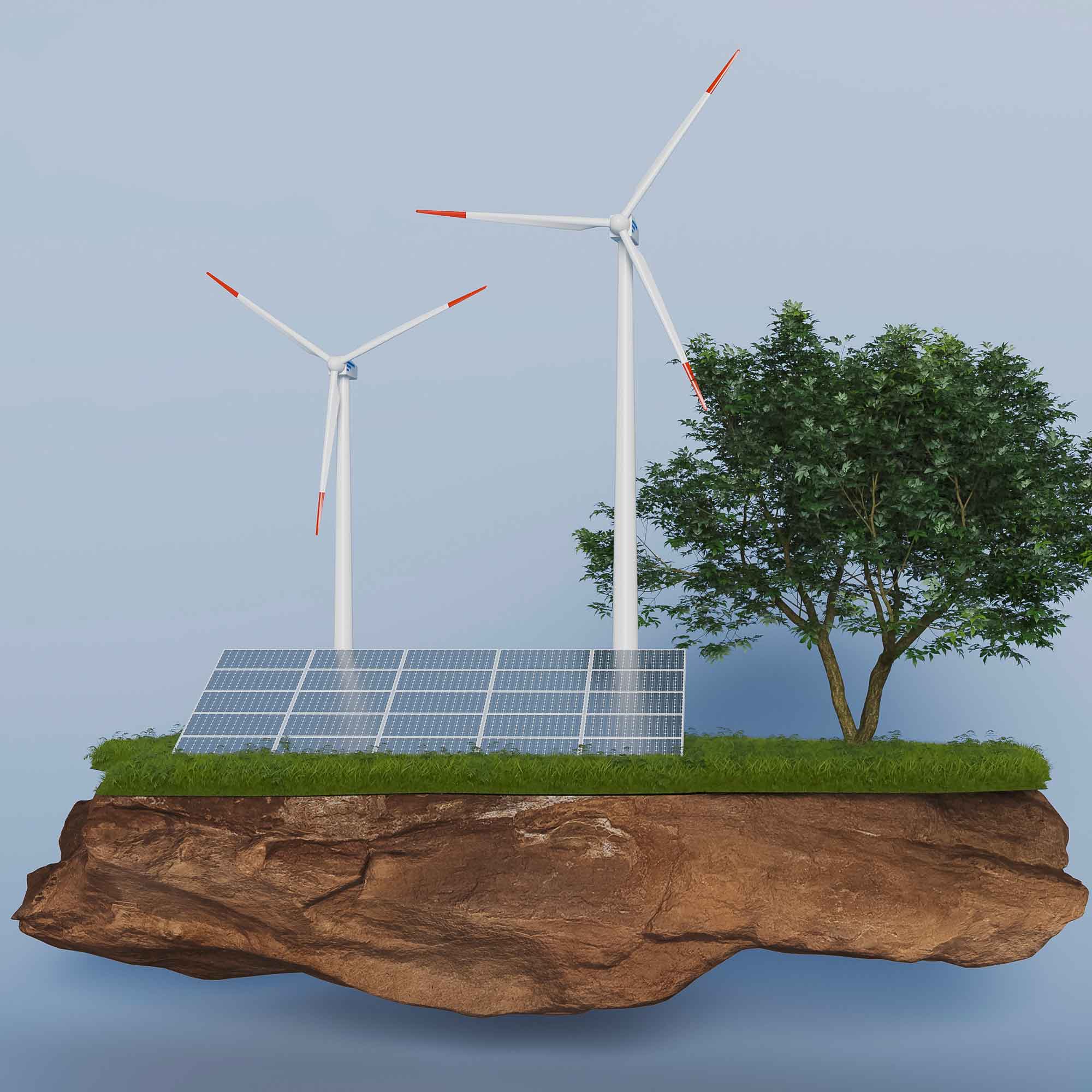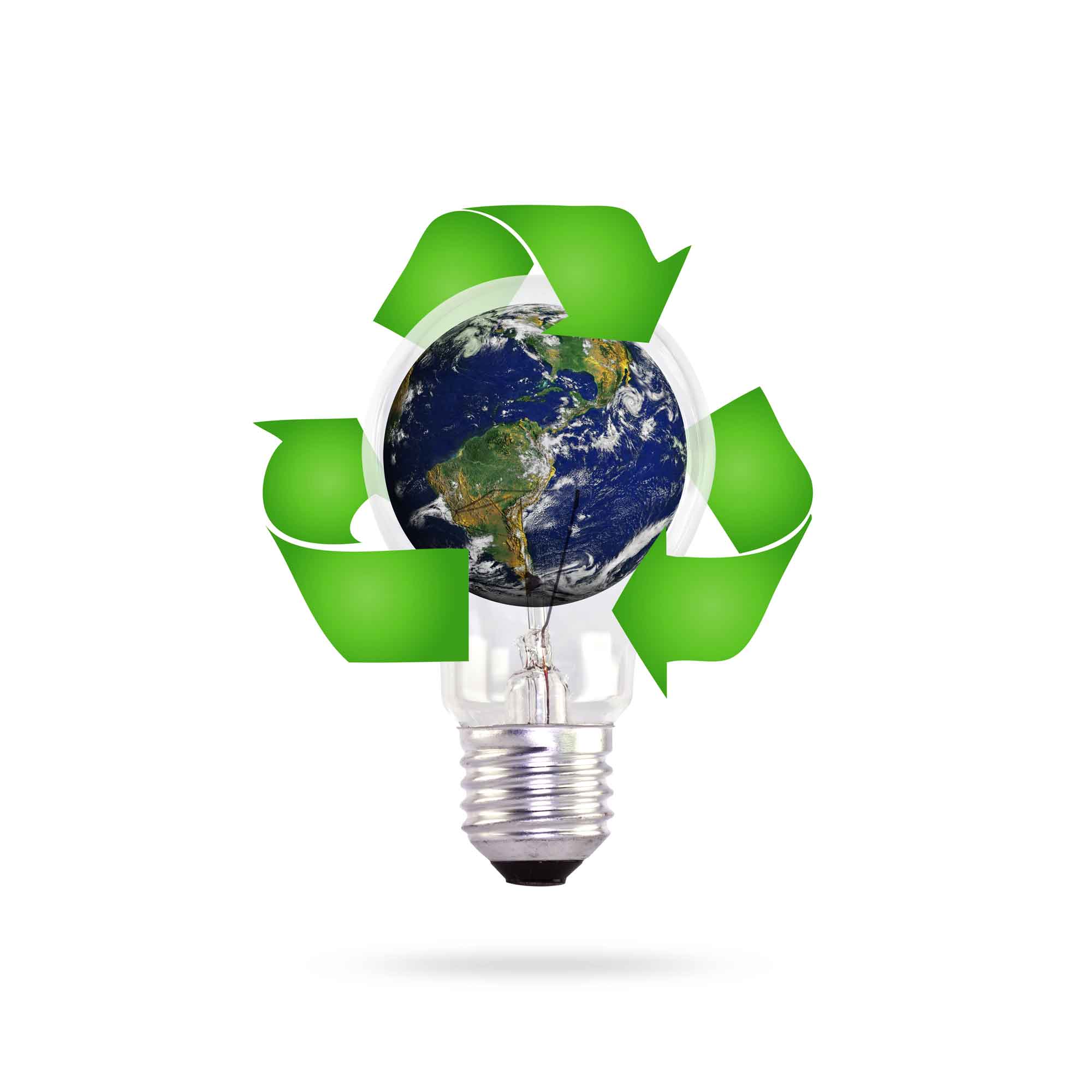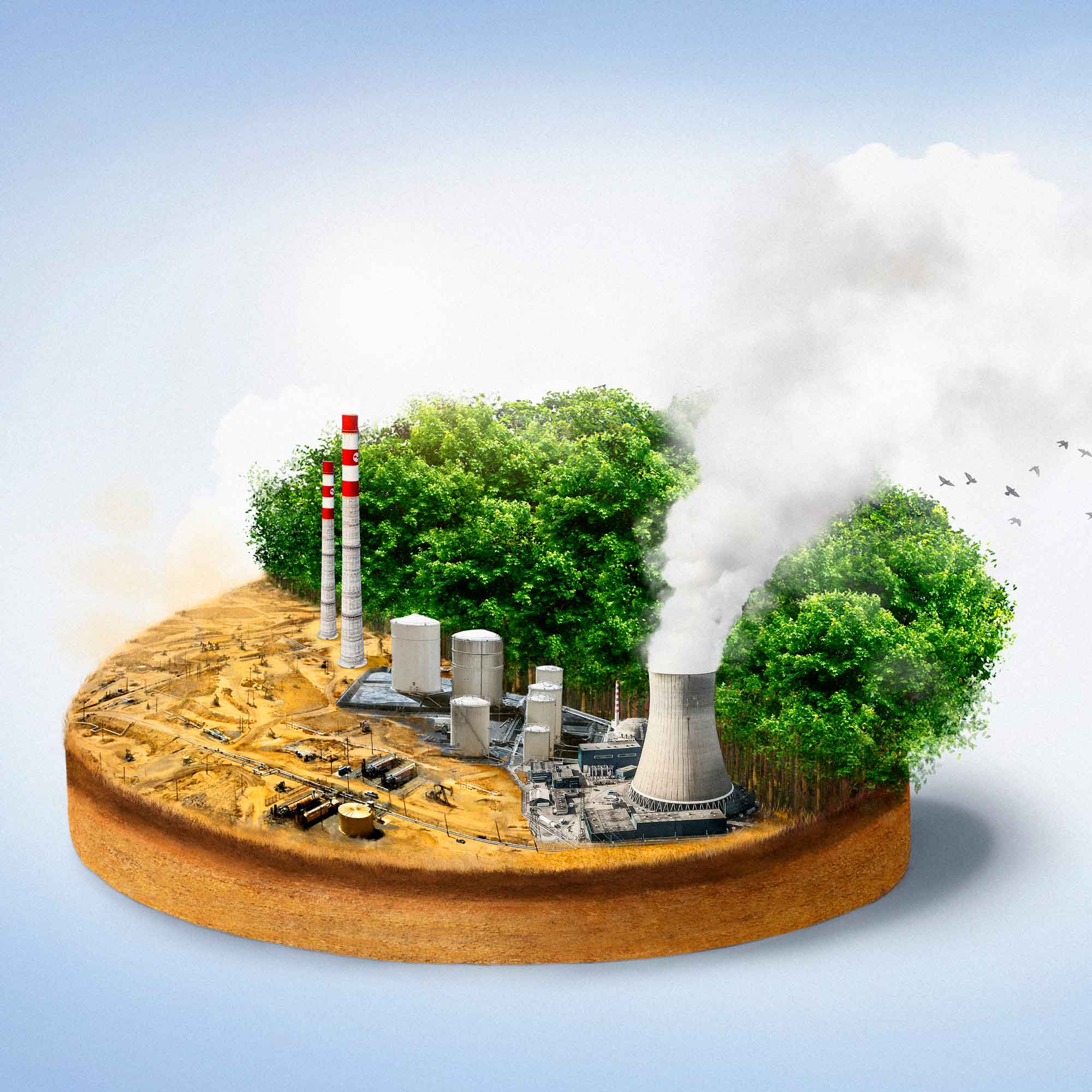Wind Energy
Wind is the movement of air around our planet. It is created by the effects of the sun on the atmosphere and the earth’s surface. As the ground is heated by the sun, the air above it becomes lighter and rises, creating vacuums that are filled with cooler air. The wind is essentially caused by differences in atmospheric temperature and pressure.
Local winds are produced as the sun heats the earth in a given area. Prevailing winds are produced by differences in temperature between the polar caps and the equator. Man has been converting wind into mechanical energy for thousands of years, as ancient windmills and sailboats can testify. Modern wind farms are converting the kinetic energy of the wind into electrical energy.
Clean, renewable wind energy is the ideal alternative to fossil fuels. Wind turbines produce no atmospheric emissions, no harmful waste or any other type of air or water pollution. And the noise produced by a wind turbine, as measured outdoors close to nearby houses, is no more than 40 dB, which is equivalent to the hum in a library.
Wind energy is therefore particularly reliable and has multiple economic, environmental and social benefits. Not surprisingly, the wind is one of the fastest-growing energy sources in the world.
How It Works
Wind turbines are machines that use the kinetic energy of the wind to generate electricity. The basic principle behind their operation is relatively simple.
Wind turbines consist of several key components. The most recognizable part is the rotor, which is made up of two or three blades that rotate around a central hub. The rotor is connected to a generator, which converts the kinetic energy of the rotating blades into electrical energy. The generator is typically located inside a housing called a nacelle, which is mounted atop a tall tower.
As the wind blows, it causes the rotor blades to rotate. The angle of the blades is adjusted by a mechanism called a pitch control system, which keeps the rotor blades at an optimal angle relative to the wind speed and direction. This helps maximize the amount of energy that can be extracted from the wind.
The rotation of the rotor turns a shaft that is connected to the generator. Inside the generator, a series of magnets and coils of wire are used to generate an electric current. The amount of electricity that is produced depends on a variety of factors, including the wind speed, the size of the rotor blades, and the efficiency of the generator.
Once the electricity has been generated, it is sent to a transformer, which increases the voltage and sends the power to the electrical grid. The electricity can then be used by homes, businesses, and other users of the electrical system. Wind turbines are an increasingly popular source of renewable energy, and can be found in many locations around the world. They offer a number of benefits, including a low carbon footprint, a reliable source of electricity, and the ability to generate power in remote locations.



Get In Touch With Us!
+254 717 108 280
info@kingdomenergies.com
